
Imagine you’re stepping into a world where precision and innovation are key, and expertise in eye care capacity is indispensable. Welcome to the realm of phoropters, the quintessential instrument of eye examinations. It’s a world shaped by great minds and even greater ambition, where the likes of models 11625 and 11635 exist. These specific models may appear almost identical, but when we delve deeper, subtle differences emerge that could revolutionize the way we perceive eye care.
“The phoropter is the cornerstone of eye examinations; understanding nuanced differences between models like 11625 and 11635 is a testament to a practitioner’s dedication.”
Today, we’ll be taking a close, discerning look at these two models. Comparing, contrasting, understanding their uniqueness, and appreciating their commonalities. So, tighten your metaphorical lab coat and adjust your imaginary glasses, let’s journey into the intricate world of phoropters.
Now, let’s delve right into the crux of the matter — examining the differences and similarities between Phoropter model 11625 and model 11635. Each device has its inherent attributes, but both share the legendary reputation for their feel: that distinctive smoothness and positive detents that made the Phoroptor famous in the fields of optometry and ophthalmology.
The Phoropter model 11625 and 11635 are essentially refracting instruments. The 11625 model is more of a traditional or classic Phoropter, with its standard offering of specifications. It features sphere ranges from -19.00D to +16.75D, cylinder power from 0.00D to 6.00D, and a cylinder axis covering a full 360 degrees. It also provides prism measurements from 0 to 20 prism diopter and an adjustable pupil distance (P.D.) from 48 mm to 75 mm. The auxiliary dial features 10 lenses plus 2 open apertures, truly a customizable configuration for a wide range of sight conditions.
Shifting focus to the model 11635, this Phoropter has all the excellent attributes of the 11625 but takes optical quality to another level. Besides being a PC-based lensmeter, this model is also favored for its better accommodative facilities such as its increased vertex distance of 13.75 mm and extended reading distance from 5 to 28 inches. These additional features make the model 11635 a mighty beast in the realm of refracting devices.
Regardless of which model you choose, it’s evident that both models uphold the Reichert Ultramatic RX Master Phoroptor’s reputation, with their superior performance and precise accuracy in measuring and correcting refractive errors.
| Feature | Phoropter Model 11625 | Phoropter Model 11635 |
|---|---|---|
| Manufacturing Country | USA | USA |
| Type of Refracting Instrument | Reichert Ultramatic RX Master Phoroptor | Reichert Ultramatic RX Master Phoroptor |
| Optical Quality | High | High |
| Feel and Smoothness | Legendary | Enhanced with advanced features |
| Prism Precision | Precision geared rotary prism | Precision geared rotary prism |
Given that you now understand the shared features of Phoropter model 11625 and 11635, let’s delve into their unique characteristics.
Model 11625 is adorned with the classic touch that has been trusted by professionals for years. Its legendary feel is characterized by smoothness and positive detents that have made the Phoroptor famous around the globe. It’s a piece of craftsmanship that combines tradition with quality. Moreover, this model includes .25 Flip cross cylinder and 1.50 Retinoscopic Lenses as part of its accessories. In addition, it comes with an accessory case, 3 pairs of nylon face shields, a Rotochart, Reading rod with card holder enhancing its delivery of accurate and comprehensive eye examinations.
The Phoroptor Model 11635 pushes the edges of innovation in the field of optometry. While it preserves the legendary feel like its counterpart, it stands out with advanced features providing refined user experience. This modernized version brings a touch of the future to your practice, offering added efficiency and precision. It incorporates state-of-the-art technology, leading to more precise interpolation of small prism diopters.
Comparatively, both models are a testament to the high standards of the Phoroptor brand offering the perfect blend of classic touch and innovation. Choosing between Phoropter Model 11625 and 11635 greatly depends on your practice’s needs and preferences, however, rest assured that both models will significantly enhance your eye examination process.
| Features | Phoropter Model 11625 | Phoropter Model 11635 |
|---|---|---|
| Sphere | -19.00D to +16.75D | -19.00D to +16.75D |
| Cylinder Power | 0.00D to 6.00D | 0.00D to 6.00D |
| Cylinder Axis | 360 degrees | 360 degrees |
| Prism | 0 to 20 Prism Diopter | 0 to 20 Prism Diopter |
| P.D. | 48 mm to 75 mm | 48 mm to 75 mm |
| Vertex Distance | 13.75 mm | 13.75 mm |
| Reading Distance | 5 to 28 inches | 5 to 28 inches |
| Auxiliary Dial | 10 lenses plus 2 open apertures | 10 lenses plus 2 open apertures |
| Cross Cylinder | 0.25 0.37 or 0.05 Optional | 0.25 0.37 or 0.05 Optional |
| Prism Diopter | 0 to 20 | 0 to 20 |
| Precision geared rotary prism | For small prism diopters | For more precise interpolation of small prism diopters |
If you’re eyeing the precision aspect closely, the Model 11635 holds a slight edge. It features an innovative precision geared rotary prism enabling more accurate interpolation of slight prism diopters. This paves the way for more detailed vision testing, enhancing its effectiveness in detecting and addressing vision-related concerns.
On the other hand, Model 11625 doesn’t fall behind when it comes to essential features. It remains a reliable choice sporting an assortment of 10 lenses plus 2 open apertures in the auxiliary dial, offering a plethora of options for myriad vision tests. While it doesn’t carry the precision geared rotary prism of its counterpart, it’s still armed with a capable rotary prism ideal for decoding small prism diopters.
Buyers will also appreciate that both models come with a series of accessories, enabling a comprehensive vision assessment toolkit. These accessories include a .25 Flip cross cylinder for astigmatism testing, 1.50 Retinoscopic Lenses for determining refractive error, an accessory case for storage, 3 pair nylon face shields for protection, a Rotochart for tracking results, and a Reading rod with a card holder for streamlined testing sessions. With these accessories, both models serve as holistic solutions, allowing for a range of vision evaluations and treatments.
Considering the specifications, both models demonstrate clear strengths. However, the choice between the two should be calibrated to suit specific requirements and preferences so that the selected phoropter delivers the best possible vision care.
| Phoropter Model 11625 | Phoropter Model 11635 | |
|---|---|---|
| Specifications | Sphere -19.00D to +16.75D, Cylinder Power 0.00D to 6.00D, Cylinder Axis 360 degrees, Prism 0 to 20 Prism Diopter, P.D. 48 mm to 75 mm, Vertex Distance 13.75 mm, Reading Distance 5 to 28 inches, Auxiliary Dial 10 lenses plus 2 open apertures | Sphere -19.00D to +16.75D, Cylinder Power 0.00D to 6.00D, Cylinder Axis 360 degrees, Prism 0 to 20 Prism Diopter, P.D. 48 mm to 75 mm, Vertex Distance 13.75 mm, Reading Distance 5 to 28 inches, Auxiliary Dial 10 lenses plus 2 open apertures, PC-Based Lensmeter |
| Notable Features | Legendary feel – smoothness and positive detents, Precision geared rotary prism for accurate small prism diopter interpolation | Auto-indexing PC-based lensmeter for lens position and power verification, Precision geared rotary prism for accurate small prism diopter interpolation |
| Recommended for | Those who prefer classic, reliable equipment with proven efficacy | Those keen on incorporating advanced technology for precision and verification |
Paying attention to the specifications of each model is crucial when selecting a Phoropter for your optometry practice. The specifications listed in our table are quite similar for both models. They both possess a wide sphere and cylinder power range and a complete 360 degrees cylinder axis. Such features allow for maximum accuracy when determining a patient’s eyeglasses prescription.
If you observe closely, both models share a similar design when it comes to Prism 0 to 20 Prism Diopter, P.D., vertex distance, and reading distance. What this means for you, as a practitioner, is the ability to diagnose various vision issues equally well with either model. The Auxiliary Dial, with 10 lenses plus 2 open apertures, further ensures flexibility and comprehensive evaluation.
Similarities, however, do not mean these models are identical. The Phoropter Model 11635 introduces a PC-based lensmeter – a feature absent in Model 11625. This instrument allows for another layer of verification, bolstering your confidence in the accuracy of your prescription and the quality of your service.
Model 11635’s PC-based lensmeter also takes a leap towards automation with its auto-indexing feature. You can automatically identify the position and power of the lenses, enhancing precision, facilitating speedy assessments, and providing a seamless patient experience.
By contrast, Model 11625 relies on a more tactile approach. It may lack some of the ‘bells and whistles’, but its reliability and ‘classic feel’ still hold enormous appeal. The model is highly revered for its dependable precision and the sturdy, smooth feel of its geared rotary prism.
Both Phoropter models, therefore, bring strengths to the table. But remember, the final decision lies in your hands. Which experience do you want for your patients? Classic reliability with Model 11625 or advanced precision with Model 11635? Only you can decide.
Yes, both models share some distinctive features. Many of the specifications are identical, such as a sphere range of -19.00D to +16.75D, cylinder power up to 6.00D, and a cylinder axis of 360 degrees. Additional similarities include their precise rotary prism and included accessories such as .25 flip cross cylinder and 1.50 Retinoscopic Lenses, which illustrate their strong alignment with user needs.
While both models share some similarities, they also have unique qualities. Model 11635 is lauded for technological advancements, with the 11635B Plus Cylinder Ultramatic variation as a prime example. On the other hand, Model 11625, with the popular Reichert Ultramatic RX Master Phoropter variant, delivers a more classic, time-tested experience.
Yes, indeed! There are options for customizations. You can select optional cross cylinders of 0.25, 0.37, or 0.05. Additionally, there’s also an option to adjust prism diopters within a range of 0 to 20, ensuring that these phoropter models can be tailored to individual patient needs and preferences.
Absolutely! A host of accessories are included with both models to enhance functionality and use. For instance, a reading rod with a card holder and three pairs of nylon face shields contribute to enhanced comfort and convenience during the eye exams. Also included are a .25 flip cross cylinder and 1.50 Retinoscopic Lenses. These accessories significantly increase flexibility, allowing the phoropter to adapt to different testing environments and conditions.
Embarking on the journey of choosing the perfect phoropter model for your practice can be a complex endeavor, which is why our online resource, ikistc.com, is dedicated to simplifying and enhancing your decision-making process. We invite you to dive deeper into the comprehensive specifications, revealing accessories, and the individualistic strengths of both the 11625 and 11635 models, curated meticulously for your convenience.
Our comprehensive guides are brimming with essential tips, detailed analysis, and insightful comparisons that delineate the critical differences and shared features between model 11625 and 11635. Simultaneously, our unique ‘compare feature’ offers an intuitive and effective mode of drawing parallels between these varied models, assisting you in making a well-informed decision.
Opting for the ideal phoropter can significantly enhance your eye care practice’s proficiency, enabling you to provide your patients with top-tier service. The effectiveness of your practice is inherently tied to the equipment you utilize. Knowing this, picking the right phoroptor becomes an investment in your business’s future, an investment in ensuring the best service for your patients.
Navigating the vast realm of ophthalmic tools may seem daunting, however, ‘ikistc.com’ is designed to be your reliable partner throughout this journey. With detailed features, descriptions, accessories and our expert analysis at your fingertips, the road to choosing the perfect phoropter becomes significantly less overwhelming.
As you move forward in deciding between phoropter model 11625 and 11635, we encourage you to explore ikistc.com. With our platform, you can find that perfect match that aligns seamlessly with your professional requirements and patient care goals. Embark on this crucial journey with ikistc.com today, and unlock the path to exceptional eye care delivery for your patients.
VISIT OUR SHOP
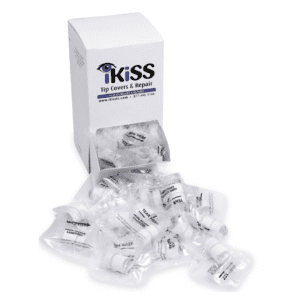
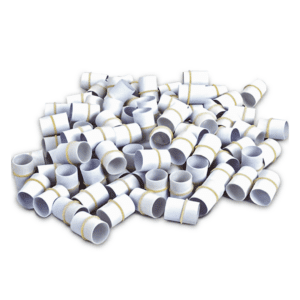
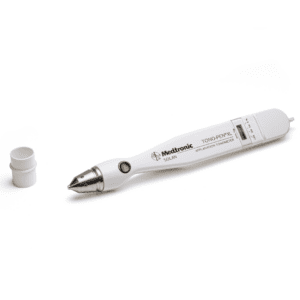
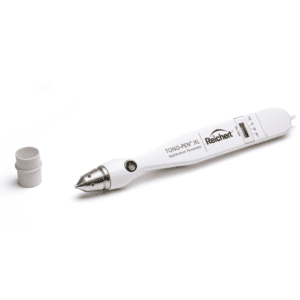
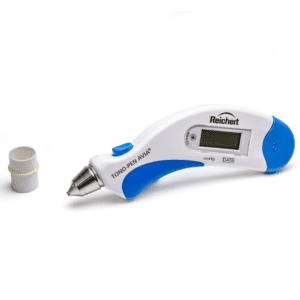
iKiSS is the go-to provider for top-quality refurbished Tono-Pen® Tonometers, Tono-Pen AVIA® Tonometers, Slit Lamps, and Phoropters, offering substantial savings of up to 40%.